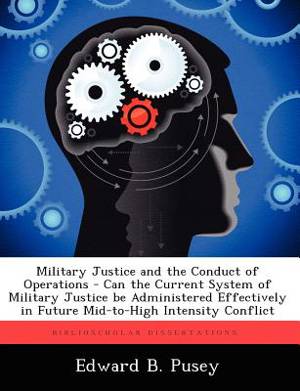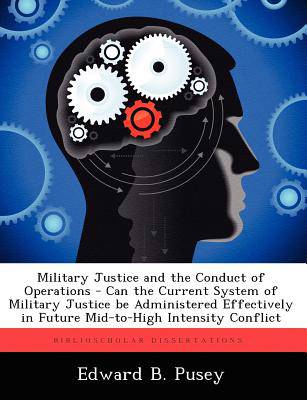
- Afhalen na 1 uur in een winkel met voorraad
- Gratis thuislevering in België vanaf € 30
- Ruim aanbod met 7 miljoen producten
- Afhalen na 1 uur in een winkel met voorraad
- Gratis thuislevering in België vanaf € 30
- Ruim aanbod met 7 miljoen producten
Zoeken
Military Justice and the Conduct of Operations - Can the Current System of Military Justice Be Administered Effectively in Future Mid-To-High Intensit
Edward Bouverie Pusey
Paperback | Engels
€ 78,95
+ 157 punten
Omschrijving
This study compares the system of military justice that existed during World War II with the present system. As a basis for comparison a framework is established which looks at three different aspects of the military justice system. The first examines the main characteristics of the military justice system. The second looks at the 'due process' rights of a military offender. The third and last addresses the organization and capabilities of past and present Staff Judge Advocate Sections at division level and below. The overarching context in which this comparison is made is the tempo of operations and the combat environment as it existed during the European Campaign, and under the conditions for future mid-to-high intensity conflict as outlined in the Army's warfighting doctrine, FM 100-5, Operations. AirLand Battle Doctrine envisions the future mid-to-high intensity battlefield as chaotic, intense, and highly destructive. To successfully support commanders in their efforts to maintain law, order and discipline, the requirements for the administration of the military justice system must be flexible enough to meet the challenges resulting from the tempo of operations and the combat environment. The system should also be able to function without undermining the 'due process' rights of soldiers. Research reveals that the 'due process' rights of the soldier have been significantly enhanced since World War II. The addition of these rights has added to the complexity of the administration of the military justice system. There is no evidence that the anticipated tempo of future operations and combat environment were taken into consideration when changes occurred to the military justice system. This study concludes that the current system of military justice will not affect commander's ability to conduct operations but, combat operations could affect significantly the administration of the military justice system.
Specificaties
Betrokkenen
- Auteur(s):
- Uitgeverij:
Inhoud
- Aantal bladzijden:
- 112
- Taal:
- Engels
Eigenschappen
- Productcode (EAN):
- 9781249372837
- Verschijningsdatum:
- 13/09/2012
- Uitvoering:
- Paperback
- Formaat:
- Trade paperback (VS)
- Afmetingen:
- 189 mm x 246 mm
- Gewicht:
- 213 g

Alleen bij Standaard Boekhandel
+ 157 punten op je klantenkaart van Standaard Boekhandel
Beoordelingen
We publiceren alleen reviews die voldoen aan de voorwaarden voor reviews. Bekijk onze voorwaarden voor reviews.








